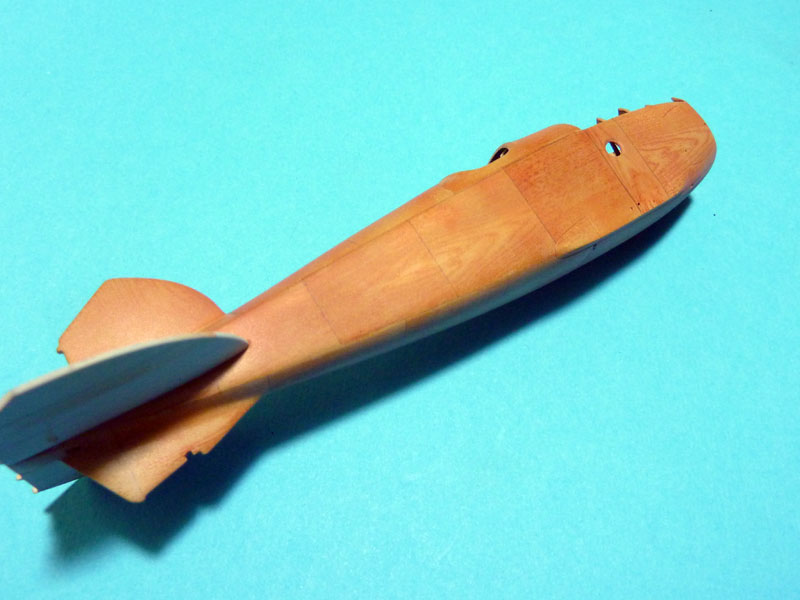1⁄1Ink Your Grain
introduction
Many modelers search for alternatives and ever easier ways to achieve particular wood effects on their models. Wood grain painting is one of those techniques that was present with modelers for ages, and there is still enough room to experiment and make further improvements. It is also the feature that makes our hobby ever more interesting and attractive, but also artistic. At least in my opinion.Using artist's oils is probably the most common and classic way to achieve nice looking wood grain pattern. Some folks have developed the technique and applied it with such an ease that makes you pause and think. However, mastering artist oils requires some experience and patience, and not only due to the fact that oils have generally longer drying times (unless you're using sicatif to shorten it!). The results are not always uniform and satisfactory for every modeler, and it really boils down to your skills and artistic abilities.
If you are painting idiot like myself, you probably wanted to find your way through and experiment with alternative ways to achieve nice and uniform wood grain pattern. I wanted to present you with one of the techniques that I developed only recently; it is not very complex nor difficult to apply, but it does require additional tools and patience. If you own airbrush, you may find it interesting enough to experiment on your own and eventually improve the technique described here.
precautionary measures
The main material utilized in this technique is a good-quality artist's inks. Inks are widely used in graphic industry, and are beloved by many graphic designers, calligraphers and artists as well as illustrators. Having experimented with inks before, I am aware of certain ink properties that are really beneficial in our hobby: quick drying time, brilliant colors, almost infinite optical mix possibilities, fully inter-mixable, easily diluted and cleaned...Although many manufacturers claim that some inks are water resistant when dry, my experience doesn't support the fact. Most inks will be simply washed off with water even when complete dry. This is not particularly bad from the perspective of airbrush cleaning or repairing the mistakes, but it is not particularly welcome property if you want to keep achieved results intact before you apply decals or clean your model. It is something to pay attention to while working with artist's inks... However, you are advised to use some sort of sealant (like future, or acrylic clear coats) to protect the final results from washing off.
tools and materials
To ink your grain pattern you'll need the following tools and materials:- fine airbrush (0.20mm nozzle at least),
- a bottle of artist ink (I use burnt sienna and bright orange),
- RB Wood Grain Stencil, and
- some masking material.
the method
The application of this method is simple if you are cautious and patient, and if you follow few simple steps:- Before I apply inks, I spray the model with primer and base color - in this case it's Tamiya Buff (XF-57). Mask surface to be painted with some masking material to protect the adjacent paintwork;
- Once the area is masked, put the stencil on it and just slightly raise it from the surface;
- Airbrush a light, misty coat of ink perpendicular to the surface, and from 10-15 cm distance (nearer to the stencil, sharper the wood grain pattern!);
- Blow some air to dry the ink, and then remove the stencil. Highlight with light coats of ink (to simulate different shades of wood);
- Repeat the same procedure for the entire model and each panel;
- When you are done with painting the panels, don't forget to apply a coat of varnish to seal and protect your hard work.
Copyright ©2021 by Entoni Seperic. Images also by copyright holder unless otherwise noted. The views and opinions expressed herein are solely the views and opinions of the authors and/or contributors to this Web site and do not necessarily represent the views and/or opinions of AeroScale, KitMaker Network, or Silver Star Enterrpises. Images also by copyright holder unless otherwise noted. Opinions expressed are those of the author(s) and not necessarily those of AeroScale. All rights reserved. Originally published on: 2013-03-23 00:09:36. Unique Reads: 12804















